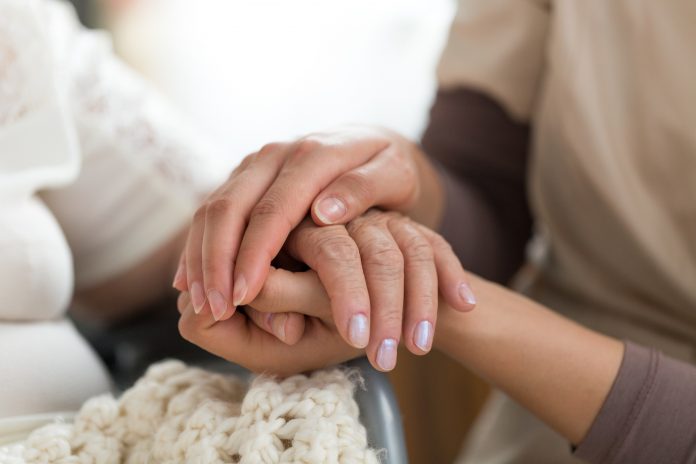Dr Ghazala Aziz-Scott, Hormone Specialist, examines the link between imbalanced hormones and osteoporosis and why hormone treatment is so important
Hormone replacement therapy is often associated with the relief of typical symptoms of the menopausal phase, such as hot flushes and night sweats.
However, the longer-term health benefits are so important for future quality of life and it can reduce the risk of heart disease, cognitive decline and osteoporosis risk.
Earlier HRT treatment is truly preventative
Our bones and skeletal system give structure to the body and all 206 bones in the human body are in constant use for mobility, anchoring muscles and protecting our internal organs, so investing in bone health is crucial at all phases of life but particularly as we age. Many women present for HRT treatment after they have experienced a fracture, not realising that earlier treatment is truly preventative, so increased awareness and education about how to preserve bone health are key public health messages.
The consequences of a fractured hip in the elderly are not just the cost and inconvenience of surgery, but the associated loss of mobility can have a wider impact on overall health. Indeed, the World Health Organization considers prevention of osteoporotic fracture one of the largest public health priorities.
Osteoporosis literally translates as “porous bone” and is a condition where bones become weak, fragile and vulnerable to fractures. Microscopically, bone has a honeycomb-like structure but when bone mineral density is lost, the honeycomb structure becomes much larger and the texture becomes brittle.
Throughout the lifespan, our bones are continuously remodelled by cells called osteoclasts, which breakdown old bone, and osteoblasts, which form new bone.
Peak bone density happens around age 30
In our younger years, the rate of bone growth is high and peak bone density is reached around age 30, after which bone density gradually declines. Osteoporosis occurs when the rate of breakdown is greater than the rate of bone synthesis. So, gradual loss of bone density is a natural part of the ageing process, but its rapid loss that leads to osteoporosis.
In the UK, three million people have osteoporosis and it affects both men and women but the incidence and fracture risk in women is significantly higher (85%) because bone formation and maintenance is physiologically linked with our sex hormones and the menopause. Bone cells called osteoblasts and osteoclasts are regulated by the hormones oestrogen and testosterone.
Oestrogen plays a major role in maintaining bone density and inhibits the activity of osteoclasts which cause bone breakdown. The menopausal transition that occurs for all women at midlife causes oestrogen deficiency as ovarian function declines and osteoclast activity increases, causing an increased rate of bone breakdown.
Other factors which influence osteoporosis risk are genetic tendency, smoking, low body weight, medications such as thyroxine, steroids and proton pump inhibitors, low dietary intake of calcium, vitamin D and vitamin K, inactivity and bone density before menopause.
Women lose 10% of their bone density during menopause
During menopause, on average, women lose about 10% of bone density but for some women, it can be as high as 20% and this decline continues with age. Unfortunately, 30% of postmenopausal women in US and Europe have osteoporosis. Fractures associated with osteoporosis can occur with minimal amounts of stress and the bone can literally snap, the commonest sites being the vertebral column, hip and wrist.
To reiterate, this is a preventable health issue with the correct treatment and lifestyle advice. Women who have premature ovarian insufficiency or a premature menopause before the age of 45 are at particular risk if they are not treated and should continue HRT until the age of natural menopause at least. Bone density is easily measured with specialised scan called a DEXA.
Testosterone regulates bone growth and maintenance by stimulating osteoblasts involved in new bone generation. Testosterone also converts to oestrogen in both men and women, which inhibits osteoclasts and protects bone. Men have a gradual decline in testosterone with age but the so-called andropause doesn’t affect all men and is also impacted by metabolic conditions such as diabetes and cardiovascular disease. Women have smaller amounts of testosterone produced by the ovaries and adrenal glands, which also decreases after menopause and therefore impacts bone health too.
Hormone replacement therapy is crucial to preventing osteoporosis
Research studies have confirmed the huge importance of hormone replacement therapy in the prevention of osteoporosis and is supported by the Royal Osteoporosis Society. However, the decision to take HRT should be made after full discussion and consideration of the risks and benefits, with regular review.
For the majority of women, the benefits of using bioidentical or regulated bodyidentical HRT far outweighs the risks and will protect against osteoporotic fractures and also improve overall quality of life. HRT is energising and enables continuing exercise and mobility, which is also crucial in maintaining bone density and reduces the rate of decline with age. Weight-bearing exercise on your feet is very effective, both low impact with brisk walking and climbing stairs and higher impact such as running, dancing and jumping.
Resistance training with weights strengthens muscles, naturally raises testosterone and supports bone formation too, while body work such as pilates and yoga helps posture and balance, reducing the risk of falls.
Optimal nutrition also prevents osteoporosis and is important in bone metabolism. Calcium is the building block for bones, vitamin D supports effective calcium absorption from the intestine and vitamin K works in conjunction with D to ensure calcium is deposited in the bones. Vitamin C is implicated in the synthesis of collagen which is part of our connective tissue.
Minerals such as zinc, magnesium and boron are also important for bone mineralisation and development of bone structure, so good sun exposure, a nutritious diet and regular supplementation will ensure the best bone health, but hormone replacement really is the secret to strong bones and the ultimate vitality.











